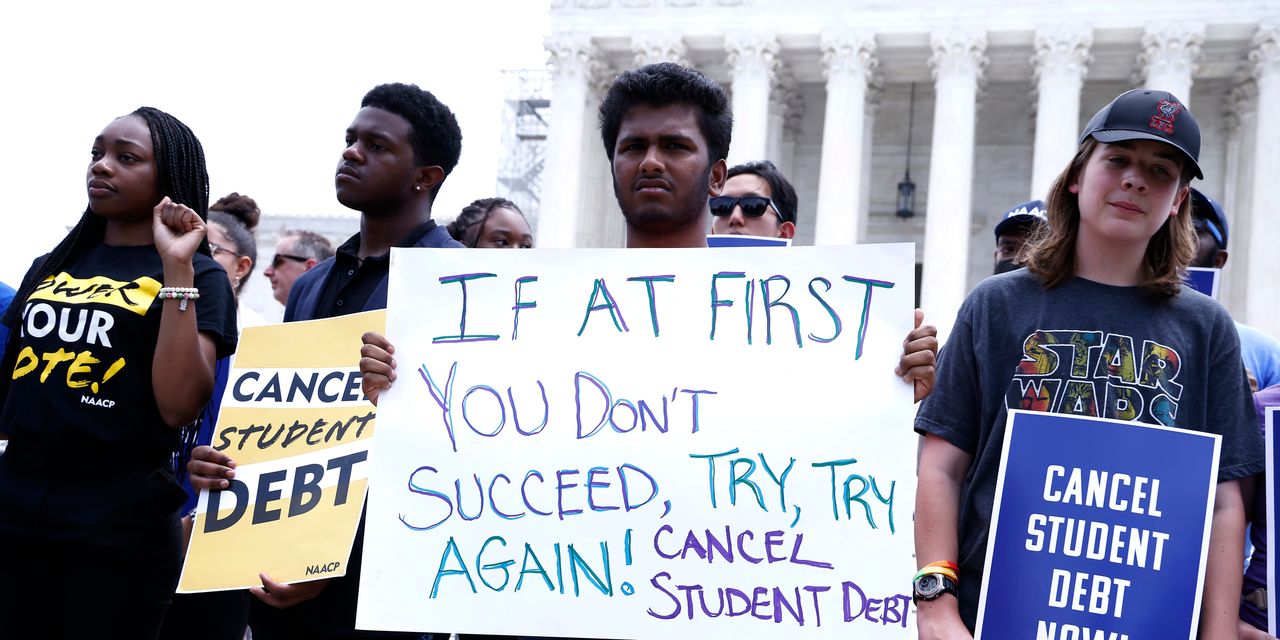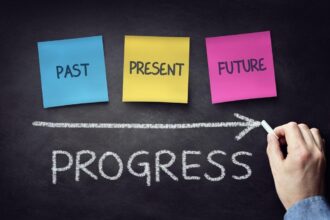The Biden administration provided the most detail yet about who could be eligible for student-loan forgiveness under its second stab at a mass debt relief plan.
It’s too early to know exactly who would qualify because the process to determine the contours of the debt-forgiveness plan is still underway. But if the Biden administration gets what it pitched Monday, this new debt-relief proposal likely won’t impact as many borrowers as the plan the Supreme Court knocked down in June, which would have canceled up to $20,000 in debt for more than 40 million student-loan borrowers.
In many cases, however, those who qualify could have more debt canceled than under the original plan. And experts say what the Biden administration outlined this week could have a significant impact on transforming the student-debt system going forward.
“What we saw with the original debt-relief plan was this very broad sweeping program, which had some parameters on it, but basically it was something that every borrower could see themselves,” in said Persis Yu, deputy executive director of the Student Borrower Protection Center, an advocacy group. “What they’re doing here is identifying systemic issues that have caused very specific harm to borrowers and are proposing a way to address that.”
In proposed regulatory text released this week, the Department of Education is suggesting four categories of borrowers be eligible for relief. The challenges these borrowers face highlight some of the fundamental issues with the student-loan system, advocates say.
They include: borrowers who have loan balances that exceeded what they originally borrowed; borrowers who entered repayment at least 25 years ago; borrowers who attended career-training programs that have particularly high default rates or left borrowers with excessive debt and insufficient earnings; and borrowers who are eligible for forgiveness under already existing programs, but who haven’t applied for relief under those plans.
“For too many borrowers the burden posed by student debt threatens the ability to realize the benefits of higher education,” said James Kvaal, the undersecretary of education. “That’s why President Biden is fighting for student debt relief.”
Latest step in second attempt at mass debt relief
Monday’s announcement marks the latest step in the Biden administration’s second attempt at mass student-debt relief. In June, the Supreme Court knocked down President Joe Biden’s plan to cancel up to $20,000 in debt for a wide swath of borrowers. Hours after the decision, he vowed to keep trying for mass student-debt forgiveness.
In their decision, the Supreme Court’s conservative majority said the Department of Education exceeded its authority in authorizing the plan under the HEROES Act, a law that allows the Secretary of Education to waive or modify student debt in cases of a national emergency.
This second stab at debt forgiveness is grounded in a different legal authority. Now, the Biden administration is arguing it can provide debt relief under the Higher Education Act. That law includes a provision that allows the Secretary of Education to “waive, compromise or release” student debt. Advocates and some lawmakers have been pushing the agency to use that authority for years to cancel student debt.
Pursuing debt forgiveness under that law requires the Department to go through negotiated rulemaking. Through this process, which is currently underway, the Department takes feedback from stakeholders and the public on a proposal that ultimately helps to shape its final rule and policy.
The details on the debt-relief plan was released Monday as part of this process. The Department published draft regulatory text that it’s asking the negotiators — who meet for their second session next week — to consider.
The Biden administration also released an issue paper asking negotiators to weigh what should qualify as hardship for the purposes of debt relief. That could open up a fifth category of borrowers eligible for forgiveness under the plan. The parameters of who qualifies for debt relief due to a hardship “will certainly make a difference” in how far the debt relief plan goes in transforming the student loan system, Yu said.
Any plan is likely to face legal challenges
Whatever plan the Biden administration and negotiators come up with could still face litigation. But opponents likely won’t file lawsuits until the process is wrapped up in several months.
Going through the rulemaking process and limiting the scope of the debt relief may help insulate the plan from legal challenges. But Luke Herrine, an assistant professor of law at the University of Alabama, said he’s “skeptical” that a version of this regulation “that has substantial scope for doing cancellation” could make it through the court system unscathed.
“The bottom line for this Supreme Court is that they don’t like when agencies are creative in any way, they don’t like unprecedented actions,” he said. Herrine has been arguing for years that the Department can legally use its authority under the compromise and release provision to cancel student debt.
It’s hard to know at this point how many borrowers would be affected by the debt-relief proposal, but it will likely impact fewer borrowers than the original Biden administration debt-relief plan. Officials estimated under that plan that about 43 million borrowers in a wide variety of circumstances would have had some debt canceled. That initiative provided up to $20,000 in debt cancellation for any borrower earning less than $125,000, including borrowers in school.
“There’s a number of outstanding policy questions that we’re looking for feedback from the negotiators on and answers to those questions will affect the numbers,” a senior Department of Education official told reporters on a conference call. But the proposal would generally impact “large categories of borrowers and would provide significant amounts of relief,” the official said.
Indeed, in some cases qualifying borrowers would have their entire balance wiped out. Under the Biden administration’s initial plan, cancellation was capped at $20,000.
What’s more, by focusing on these categories and proposing to cancel debt for borrowers who fall into them going forward, the proposal could arguably have a larger impact on the student debt system going forward than the Biden administration’s initial plan.
“Because of their own good governance purposes and because they think it’s more likely to get the court on their side, they’re doing this whole regulatory process so they can do something they already want to do, which is to do some broad version of cancellation,” Herrine said. What officials released Monday is “narrower than that in the short term, but it opens the possibility for multiple acts of cancellation, in fact regular acts of cancellation, over time.”
‘An important list’
Overall, Yu said this proposal is “an important list” of challenges borrowers face that the Department is looking to address. Still, “I don’t know that it is as comprehensive as it should be,” she said. For example, it doesn’t get at some of the challenges borrowers have faced as payments have resumed for the first time in more than three years.
That process has highlighted issues with the student-loan system — for example challenges keeping accurate track of borrowers’ payment history — that have been “baked in” for years, Yu said.
In addition, there are areas identified by the Department where the agency could suggest a broader remedy. For example, for borrowers who owe more than what they originally borrowed, the agency is proposing to waive all or a portion of the amount that they owe. That could mean bringing borrowers back to their principal balance, Yu said. In developing the parameters around the relief provided to borrowers in this category officials should consider how much a borrower has already paid, she added.
“We know especially at least anecdotally that there are lots of people who have paid well over their principal balance,” Yu said. “In order to address the harms that they have identified. there may be a different or better way to go about that.”
Read the full article here










